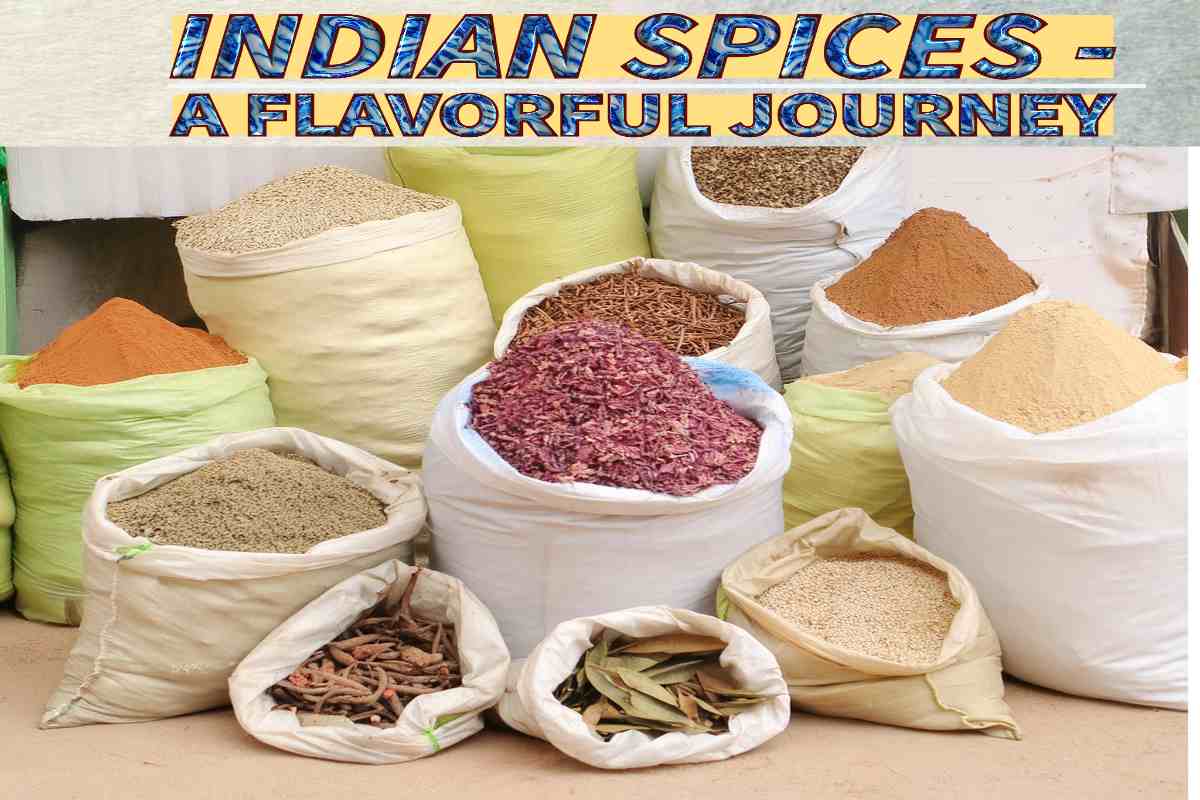Indian Spices is renowned worldwide for its vibrant flavors and diverse culinary traditions. Through the captivating world of Indian spices, we will embark on a flavorful journey in this comprehensive article. The magical blend of spices used in Indian cooking not only adds depth and complexity to dishes but also provides a plethora of health benefits. Join us as we delve into their origins, unique characteristics, and pivotal role in Indian cuisine, unraveling the secrets of these culinary treasures along the way.
The Essence of Indian Spices
Understanding the Spice Palette
Indian spices are the heart and soul of the country’s cuisine. With a history spanning thousands of years, they have shaped the flavors and culinary practices of the subcontinent. These spices are carefully selected, combined, and ground to create a harmonious symphony of taste and aroma. Each spice has distinct characteristics, contributing to the overall complexity and depth of Indian dishes.
The Historical Significance
Spices have played a significant role in Indian culture and history. India’s strategic location along ancient trade routes attracted merchants from various corners of the world, resulting in a remarkable exchange of ideas, goods, and flavors. This cultural amalgamation influenced the indigenous spice trade, enriching it with new ingredients and techniques. The spice trade flourished, and India became a hub for producing and exporting spices, captivating the taste buds of people taste buds salty Benefits of Indian Spices.
Beyond their flavorsome qualities, Indian spices offer a multitude of health benefits. These potent ingredients are known for their antioxidant, anti-inflammatory, and antibacterial properties. Turmeric, for instance, contains curcumin, a powerful compound renowned for its anti-inflammatory and antioxidant effects. Cumin aids digestion, while cinnamon helps regulate blood sugar levels. Incorporating these spices into your diet can enhance your well-being while tantalizing your taste buds.
A Journey Through Indian Spices
Turmeric (Haldi)
With its vibrant hue, turmeric is prominent in Indian kitchens as a staple spice. It plays a crucial role in curries, lentil dishes, and pickles, not only imparting color and flavor but also offering a multitude of health benefits. Notably, its active compound, curcumin, has been extensively researched for its potential to reduce inflammation, enhance brain health, and promote heart health. As a golden spice, turmeric adds both vibrancy and wellness to your meals.
Cumin (Jeera)
Cumin seeds, with their earthy and warm flavor, are widely used in Indian cuisine. They are often tempered in hot oil to release their aromatic oils before being added to dishes. Cumin aids digestion, helps alleviate bloating, and adds a distinctive taste to dishes like curries, rice, and lentils. Its versatility and unique flavor make it an indispensable spice in Indian cooking.
Cardamom (Elaichi)
Cardamom is known as the “Queen of Spices” due to its aromatic fragrance and sweet, slightly citrusy flavor. This spice is often used in both sweet and savory dishes. It adds depth to desserts like kheer (rice pudding) and imparts a refreshing taste to masala chai (spiced tea). Additionally, cardamom has been used in traditional medicine to aid digestion, freshen breath, and improve oral health.
Coriander (Dhania)
Coriander seeds and leaves, known as cilantro, are integral to Indian cooking. The seeds have a warm, citrusy flavor, while the leaves provide a fresh and herbaceous note. Coriander is used in various forms, including whole grains, ground powder, and new leaves. It adds a delightful aroma to curries, chutneys, and marinades and is known for its digestive properties.
Fenugreek (Methi)
Fenugreek, known for its slightly bitter and nutty flavor, is a distinctive spice that finds extensive use in Indian cuisine. Both its leaves and seeds hold a significant place in culinary practices. In particular, fenugreek seeds are commonly toasted and ground, resulting in the creation of a versatile spice blend known as “methi powder.” This indispensable spice plays a vital role in curry powders and masalas, contributing to their unique taste profiles. Fenugreek is also known for its potential health benefits, such as supporting digestion and promoting milk production in lactating women.
Mustard Seeds (Sarson)
Mustard seeds, which come in various colors, including yellow, brown, and black, are an essential component of Indian cuisine. These tiny seeds play a significant role in adding a distinctive tangy flavor and aroma to dishes. Moreover, they serve multiple purposes, such as tempering, pickling, and producing flavorful oils. Additionally, mustard seeds offer antimicrobial properties and are packed with antioxidants, rendering them a nutritious choice for enhancing your culinary repertoire.
Cloves (Laung)
Cloves are aromatic flower buds that deliver a warm and spicy flavor. They are often used whole or ground in both sweet and savory preparations. Cloves add depth to biryanis, pilafs, and spice blends like garam masala. Besides their culinary applications, cloves have been utilized for their analgesic and antiseptic properties. Their distinctive taste and numerous health benefits make them an indispensable spice in Indian cuisine.
Unlocking the Secrets of Indian Spices
Indian spices are not merely ingredients but the locking of a world of flavors. To truly appreciate their essence, it is essential to understand their origin, cultivation, and traditional uses. By exploring the spice markets of India, you can witness the bustling trade, encounter aromatic treasures, and delve into the vibrant tapestry of Indian culinary heritage.
Conclusion
Indian spices, with their tantalizing flavors and captivating aromas, serve as the pillars of the country’s cuisine. Moreover, their rich history, diverse characteristics, and health benefits make them indispensable in Indian cooking. By incorporating these spices into your culinary repertoire, you can elevate your dishes to new heights and experience an authentic taste of India’s vibrant gastronomy.
Also Read: Diversity of Indian Cuisine: Exploring the Rich Flavors and Regional Delicacies
You can connect with DNN24 on Facebook, Instagram, Twitter and subscribe to our YouTube channel.

